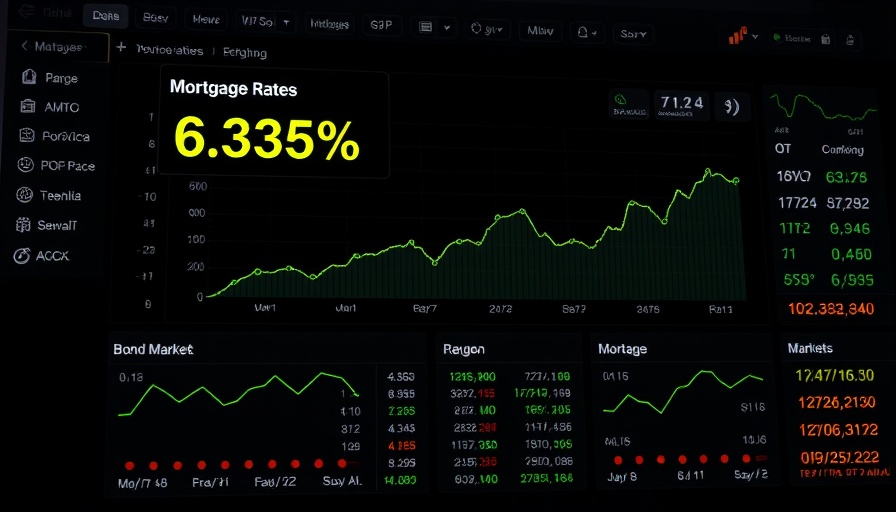
Navigating the Narrow Mortgage Rate Range
As mortgage rates continue to hold within a narrow range, borrowers are facing a stable yet remarkably stagnant landscape. Rates edged slightly lower today compared to the previous day, but for most lenders and borrowers, these fluctuations hardly register amidst a week characterized by minimal changes.
The Bond Market's Influence on Mortgage Rates
This consistent scenario has been closely tied to ongoing developments in the bond market. Recent shifts, particularly as traders respond to looming economic uncertainties, have essentially created a tight band for mortgage rates. The impending government shutdown looms large, contributing to a cautious atmosphere where traders are unwilling to make bold moves. Consequently, today's minor adjustments reflected a slight uptick in rates spurred on by weakness in government securities.
Economic Indicators and Their Impact
With the latest jobs report anticipated for release but now shrouded in uncertainty due to the potential shutdown, other economic indicators have taken center stage. Current data revealed a decrease in job openings alongside dwindling consumer confidence. While these factors typically wouldn't lead to dramatic shifts in borrowing costs, they do create a modest environment of reassurance, slightly favoring mortgage rates.
Market Signals: The End of the Month Impact
This week's trading environment is heavily influenced by month and quarter-end activities, which often dictate market momentum over short periods. It’s essential for borrowers and investors to understand that rates, while currently stable, may be susceptible to sudden changes as economic data becomes available or as political decisions unfold. The past few days of trading highlight how external factors can unexpectedly shift market sentiment.
Future Predictions: What Lies Ahead for Mortgage Rates?
As we gaze ahead, the prognosis for mortgage rates hinges considerably on political developments in Washington, alongside any unexpected economic shifts. Analysts suggest that barring dramatic policy changes or unforeseen economic indicators, rates might continue to oscillate within this narrow band for the immediate future. This stability can be particularly advantageous for borrowers looking to navigate refinancing or new purchases.
Actionable Insights for Borrowers
Given this relatively stable mortgage environment, potential homebuyers and refinancing homeowners should consider locking in current rates, particularly if they fall at or below 6.37%. Financial experts suggest monitoring local lenders closely during this period, as some might exhibit varying rates based on their operational strategies. It’s a prudent time for borrowers to evaluate their personalized mortgage options, factoring in both immediate needs and long-term financial goals.
Conclusion: Making Sense of the Mortgage Landscape
In an ever-evolving financial landscape, understanding the currents that drive mortgage rates can empower borrowers to make informed decisions. With the potential for shifting political and economic factors, staying informed will be key for prospective homebuyers entering this narrow range of rates.
 Add Row
Add Row  Add
Add 




Write A Comment